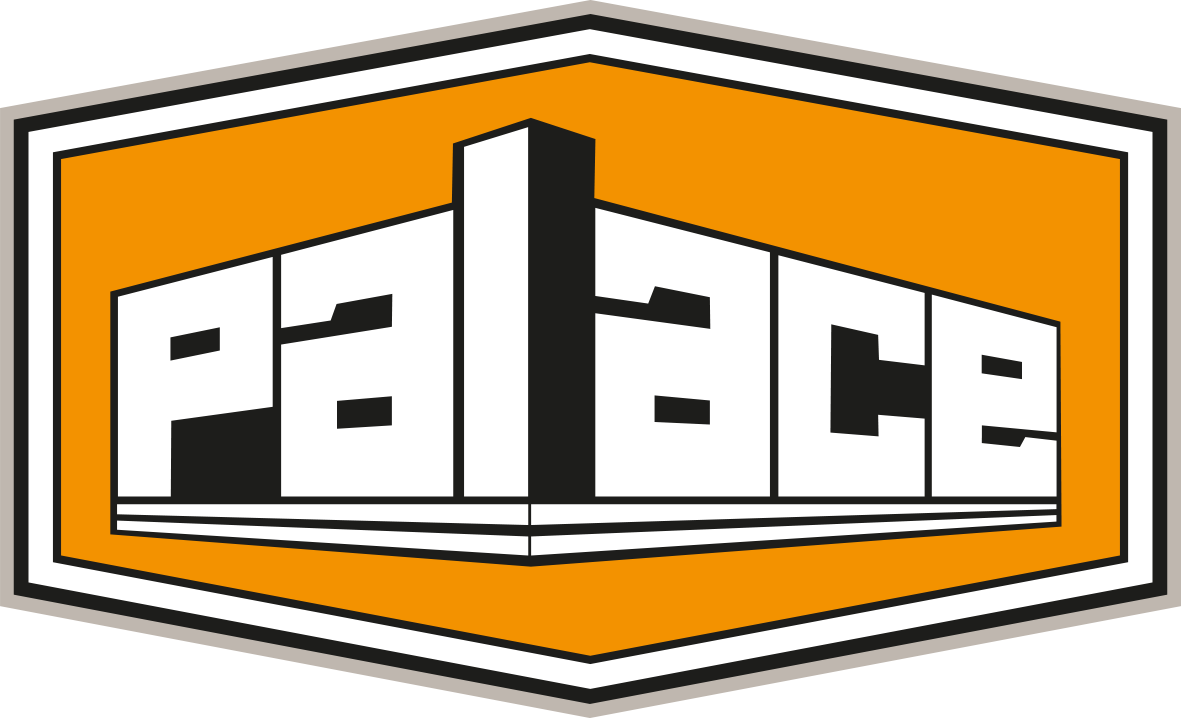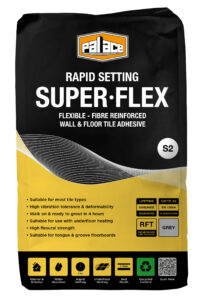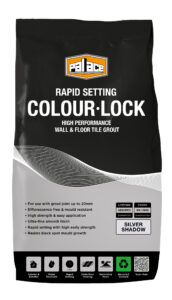DESIGN CONSIDERATIONS
All tile fixing should be carried out in accordance with BS 5385: WALL &FLOOR TILING Part 3 1989 – Code of practice for the design & nstallation of ceramic floor tiles and mosaics and the Tile Association guide – “TILING TO TIMBER SHEETS BOARDS & TIMBER SUBSTRATES. Section 14.4 of BS 5385 part 3 1989 emphasises the need for timber substrates to be more than suitable for carrying the expected load and then be stiffened prior to tiling.
The moisture content of timber can vary depending on the temper temperature and humidity conditions depending on it’s storage location. To ensure dimensional stability of structural timber it is essential to allow time for the moisture content of the wood to form an equilibrium with the ambient conditions of the environment where it is to be permanently installed. Composite wood boards will stabilise to lower moisture contents than is the case for solid wood structures.
Timber should be conditioned to suit its’ intended environment by storage for a suitable period of time until the moisture content stabilises to an acceptable level. The table below indicates the normal “in “in-service” moisture contents for softwood timbers, studwork & battens:
| Conditions | % moisture in Softwood timbers | % moisture is composite boards |
| Unheated | 15 – 19% | Up to 15% |
| Periodic heating | 10 – 14% | 9 – 12% |
| Continuous heating | 9 – 11% | 7 – 9% |
| Under-floor heating | 6 – 8% | 5 – 7% |
Failure to ensure the moisture content of structural timbers is within the ranges shown above could result in dimensional changes which can adversely affect the stability of any bond between it and rigid ceramic or stone tiles.
TYPES OF TIMBER BOARD & SUBSTRATE
Tongue & Groove Floorboards should be fixed directly onto joist spaced no joists more than 300mm and should only be tiled over using 2-part Super-Flex adhesive
Plywood is available as “wood based panel” or shuttering ply (as defined in BS EN 313-2) however Marine Plywood (BS 1088) is more durable, water 2) resistant and hence suitable for tiling. WBP Plywood (Water & boil proof) is similar to Marine ply but has no BS classification.
Particle board (Chipboard) is defined in BS EN 309 and is an adhesive bound agglomeration of wood particles suitable for receiving tiles only in permanently dry areas
All of the above types of timber board when used for flooring must be a minimum of 15mm thick and screw fixed over stable battens at no more than 300mm centres to be structurally acceptable for fixing over with ceramic tile adhesives.
Multi-Layered Strand board (OSB board) as defined in BS EN 300 are oard) suitable for tiling usually on wall surfaces. They are generally 11mm to 18mm thick, bound with a strong adhesive and incorporate water repellent components to provide improved moisture resistance
STRUCTURAL REQUIREMENTS
WALL TILE FIXING:
The use of sheets and boards that are still subject to movement from changes in moisture content should be avoided it at all possible and the exposed backs and edges of boards should be sealed against the ingress of seal moisture to reduce the risk of movement and warping. In general where a sheet or board has a smooth or rough side, the latter should be used as the receiving surface for tiling.
Joints between boards should define the position of movement joints and should not be bridged over with tiling. (BS 5385 part 1). Mechanical screw fixings of appropriate dimensions should be used to secure all types of boards to rigidly stable and secure battens, frameworks and noggins. NB. On wall surfaces heavy duty stone tiles should not be fixed to fibreboard or chipboard. FLOOR TILE FIXING:
Existing timber bases should be sufficiently strong & rigid before they are to receive tiling and be checked that they are capable of carrying a static load (up to 0.8Kn/m2) and a dynamic load without perceptible deflection. Stiffening the floor with new joists or additional noggins may be required where deflection is detected.
Ventilation beneath the timber floor must be provided for by air bricks or similar means. The appropriate grade of board for flooring will be a minimum 15mm thickness of either Marine or WBP plywood (BS5385 part 3) with the exposed back and edges protected from moisture ingress with a water resistant sealer (Tilers primer SBR is acceptable).
Counter sunk screw fixings at a minimum 300mm centres should secure the unter boards to joists and noggins where joints between boards should also be coincidental with the support below.
Boards in areas where frequent wetting is likely (showers & wet-rooms) should be protected by the application of a waterproof membrane (Palace Shower-tight) or an un-coupling membrane before fixing proceeds
TILE FIXING
Adhesives should be selected which are recommended for use over timber substrates. On walls D1 or D2 ready mixed dispersion adhesives can be used with selection depending on the degree of exposure to moisture. Cement based adhesives should be classified to BS EN 12004 C2. Palace Multi-Flex, Easi-Flex & Trade-Flex are all suitable for fixing to timber boards on wall & floor elevations. Super-Flex 2-part flexible adhesive should be Flex 2 used on tongue & groove or floating timber floors
GROUTING
Use Palace Flexi Wall & Floor grouts for joints from 3mm up to 12mm wide. Note all polymer modified grouts should be cleaned from tile surfaces within 1 hour of being applied as they can be difficult to remove when set.
MOVEMENT JOINTS
It is essential to ensure that where tiling is coincidental with a floor joint or a change in floor surface type that a movement joint is formed with a silicone sealant to a minimum of 6mm width (In accordance with BS 5385: Part 3 -1989, clause 19 to 23). This requires joints at all perimeters of the tiled area, coincidental with existing structural movement joints in the substrate and across large floor areas at 8 to 10m intervals.



